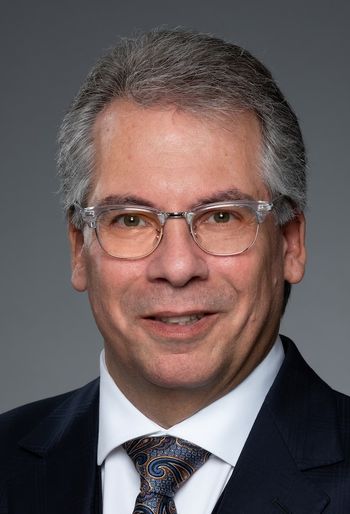
How to manage technology overload
Introducing new tools for the practice should also include addressing ways to maintain productivity.
The practice of medicine looks radically different than it did just a decade ago.
But all that technology can also come with a psychological price. Physicians w
“I don’t think there’s any question we have a serious issue,” says Mitchell Morris, MD, global leader of Deloitte’s life sciences and health care division in Austin, Texas. “There is clearly a lot of improvement to be made to EHRs and software capabilities, and more importantly to how we implement automation.”
Indeed, practices that report the biggest productivity losses in the age of digital healthcare often are those that fail to adapt. “Many of the physicians who struggle are the ones who are trying to deliver care the way they have for years and that’s not a good fit with new technology,” says Morris.
Still, most doctors generally support the use of health IT, according to a 2014 survey by Deloitte, with 70% indicating EHRs provide useful analytics and 60% saying they help to support value-based care. Another two-thirds (72%) cite “faster and more accurate billing for services” as the biggest benefit to EHR adoption, while 67% pointed to time saving through e-prescribing and improved care coordination.
To realize those benefits from their mobile apps, EHRs and decisions support tools, however, practices must embrace a culture of change, put new processes into place, and commit to IT training.
“We have found that in settings where training has sufficient support, they tend to do much better,” says Morris. “Even software that people think is the greatest in the world won’t give you what you need if you don’t train people to use it.”
Before health IT can be used effectively, practices must analyze its impact on both clinical and administrative functions, and develop a plan for workflow redesign, Morris says. Each time a practice makes a change, especially when implementing health IT, the workflow associated with that process changes, too, according to the Agency for Healthcare Research and Quality (AHQR).
Failure to account for workflow impact leads to delays in wait times, billing and communication. The AHRQ suggests practices map their workflow as early as possible, preferably before implementing a health IT system, and continue to assess processes post implementation to ensure ongoing improvement.
“Redesigning how we work is really key to this,” says Morris. “Workflow redesign should take you through all the different stations in your office, from when the patient walks through the door, to check-in, to scheduling appointment reminders. Have you thought through and figured out how automation can enhance each one?”
That doesn’t happen often enough, says Chad Anguilm, MBA, director of professional services for Medical Advantage Group, a practice consulting firm in Ann Arbor, Michigan. Many physicians, he says, are more concerned with collecting incentive program dollars to help defray the cost of health IT adoption than on redesigning processes to boost productivity. The focus on making sure all the correct boxes are checked often leads to wasteful duplication of effort.
“Doctors and staff put information into their EHR and then they have an employee who is earning $12 to $15 an hour going back in to reenter that information into the registry so they can record to the incentive program,” Anguilm says. “They’re willing to spend on that, but they won’t spend time to fix their workflows.”
Test, then train
To accelerate quality improvement, practices might consider using the Plan-Do-Study-Act (PDSA) model, developed by the Institute for Healthcare Improvement, which allows organizations to test big changes in small steps, identify unintended consequences, tweak as needed, and expand when ready. PDSA is designed to reduce waste by determining early on whether workflow changes help productivity.
As new workflows are deployed, says Anguilm, practices should try to obtain staff buy-in by communicating the benefits: a lighter workload, fewer errors or opportunity for professional growth. For example, practices that implement pre-visit laboratory testing enable their physicians to discuss lab results with patients during their visit while eliminating the need to review the results later, call patients to discuss them, and coordinate follow-up care.
Training is the other major driver of productivity gains. With every purchase of new technology, providers should ensure that they and their staff take full advantage of training available through the vendor and complete online tutorials, says Wanda Filer, MD, FAAFP, a family physician and president of the American Academy of Family Physicians (AAFP). In addition, staff members should receive training on how to use health IT (both at the front desk and in the exam room) without compromising the patient experience.
The American Medical Association notes that increased eye contact and sharing the computer screen with a patient can improve engagement and adherence. Mobile or easily-shared technology, such as laptops, tablets, and large monitors, it adds, can help physicians involve patients in the discussion.
Without proper training, however, Filer says EHRs can become “a third entity” in the exam room.
“That’s when you should be spending quality minutes and face-to-face time with your patient, and sometimes the computer can feel like an interloper in that relationship,” she says.
For many practices, the most effective training strategy is to invest in a “super user”-providing one employee with the highest level of training so that he or she can train the rest of the staff, says Anguilm. The super user should be comfortable with IT and be given adequate time and resources to stay current on the latest upgrades. He or she also should help to explain the benefits of health IT in the office.
Equally important to improving productivity is engaging patients as partners in their care, by encouraging them to use patient portals for tasks such as scheduling appointments and requesting prescription refills, as well as using time-saving technologies such as secure messaging and telehealth. Often, that means changing the dialogue at the front desk. Rather than blaming federal requirements for longer wait times, try explaining to patients how the new EHR is designed to benefit them, says Anguilm.
The rise of scribes
To meet the challenges posed by IT integration and the demand for more detailed documentation, some providers are using scribes, who assist in the exam room by entering detailed notes into the EHR during patient encounters. To ensure compliance, the Joint Commission requires physicians to sign, date and time all entries made by unlicensed scribes.
While adding to staff increases payroll, scribes can more than pay for themselves by enhancing a doctor’s efficiency, says John Bender, MD, a family physician with Miramont Family Medicine in Loveland, Colorado and a Medical Economics editorial advisory board member. The providers in his office who use scribes, for example, typically see 10 to 15 more patients per week than those who do not.
Importantly, Bender notes, scribes can also help reduce physician workload, when used effectively. The scribes in his office complete extensive training and shadow team members for several weeks before they’re permitted to work solo with a physician.
“There is no national consensus for best practices on how to employ scribes in practices,” he says, adding that a program emphasizing continuous learning is ideal. “It hasn’t worked for everyone. I’ve known physicians who say it slowed them down.”
James Jerzak, MD, a family physician with Bellin Health in Green Bay, Wisconsin, says he, too, has seen impressive productivity gains since incorporating care coordinators, who double as medical scribes, into his team-based practice model.
“We anticipated we’d take a loss with the extra personnel and that it was just preparing us for value-based payments, but we were pleasantly surprised to find that the level of service coding went up quite a bit because they had time to deal with all the different problems patients have that physicians may gloss over when rushing from patient to patient,” he says.
The care coordinators, or scribes, in his office save significant time in the exam room by completing order entry in real time, including medication reconciliation, prescription refills, and appointment scheduling. They also make the documentation process far less onerous, says Jerzak.
“It definitely saves time because I can just walk out of the exam room and quickly review and edit what they wrote before I see the next patient, so it’s not like creating a document from scratch,” Jerzak says, noting that some physicians question the improved efficiency. “It’s hard to get it until you come observe how it works. It’s all very logical.”
Jerzak says that he now sees roughly 23 patients per day, up from 20 before the care coordinator program began.
”At the end of every half day, all the notes in the office are done,” he says, adding that he can direct his full attention to the patient at every visit. While EHR adoption initially slowed his practice, Jerzak says the team-based model of care, in which a physician, care coordinator (medical assistant or physician’s assistant), clinical nurse, and scheduler, work together to meet the needs of their patients, helped restore productivity.
“Patients really bond with our care coordinators and get to know very well so the barriers to contacting our office in the future are reduced,” Jerzak says.
Unhappy EHR customers
Some productivity challenges related to technology, of course, are beyond the physician’s control. Filer is on her fourth EHR and says the latest version is generally hiccup-free, but still falls short on interoperability, which detracts from care coordination.
One of the hospitals in her community, for example, uses an EHR that is incompatible with her own. Recently, she requested records for a follow-up with a patient who had been to the emergency department. Instead of sharing it electronically, the hospital faxed her 16 pages of useless background.
“There was so much fluff in it that I couldn’t get to the pertinent data,” says Filer. “I didn’t know what her chief complaint was, what was done for her, or her ultimate diagnosis. I had to start from square one.”
In light of complaints related to interoperability, she says, the AAFP is urging the Office of the National Coordinator for Health Information Technology to make EHR technology more seamless between providers. The academy, along with other professional organizations, also is pushing for greater EHR usability.
At present, says Flier, the design and functionality of many EHRs creates inefficiency for healthcare providers, an often overlooked barrier to their adoption. “What I’m hearing from members is that their EHR has really dropped their level of productivity and that they seem to be designed primarily for billing rather than as a tool for the clinical setting,” Filer says.
Part of why doctors are so disgruntled with health information technology is that vendors, especially those selling EHRs, overstate the potential of their products, says Anguilm. Physicians who think they are purchasing technology that will make their lives easier often are sorely disappointed.
“Every time we meet with a frustrated physician, they say [EHR adoption] should have been about productivity and that they were told they could let go of a full-time employee or two [as a result of efficiencies gained],” he says. “But the reality is that the way EHRs are built…their objective was really more about accurate information with the goal of reducing the risk of critical errors and being able to manage a population of patients better.”
The evolution of change
Along with health IT regulation, physicians are grappling with meaningful use, ICD-10, and the Medical Access and CHIP Reauthorization Act (MACRA), the new Medicare payment reform law, which puts solo and small practices at a distinct disadvantage, according to Morris.
“Because of a variety of factors, including automation, it’s become increasingly difficult to maintain a viable small practice,” says Morris. “Not only do you have to have an EHR, but you also have to do quality reporting. It’s very difficult for small practitioners to afford the infrastructure.”
Newsletter
Stay informed and empowered with Medical Economics enewsletter, delivering expert insights, financial strategies, practice management tips and technology trends — tailored for today’s physicians.








